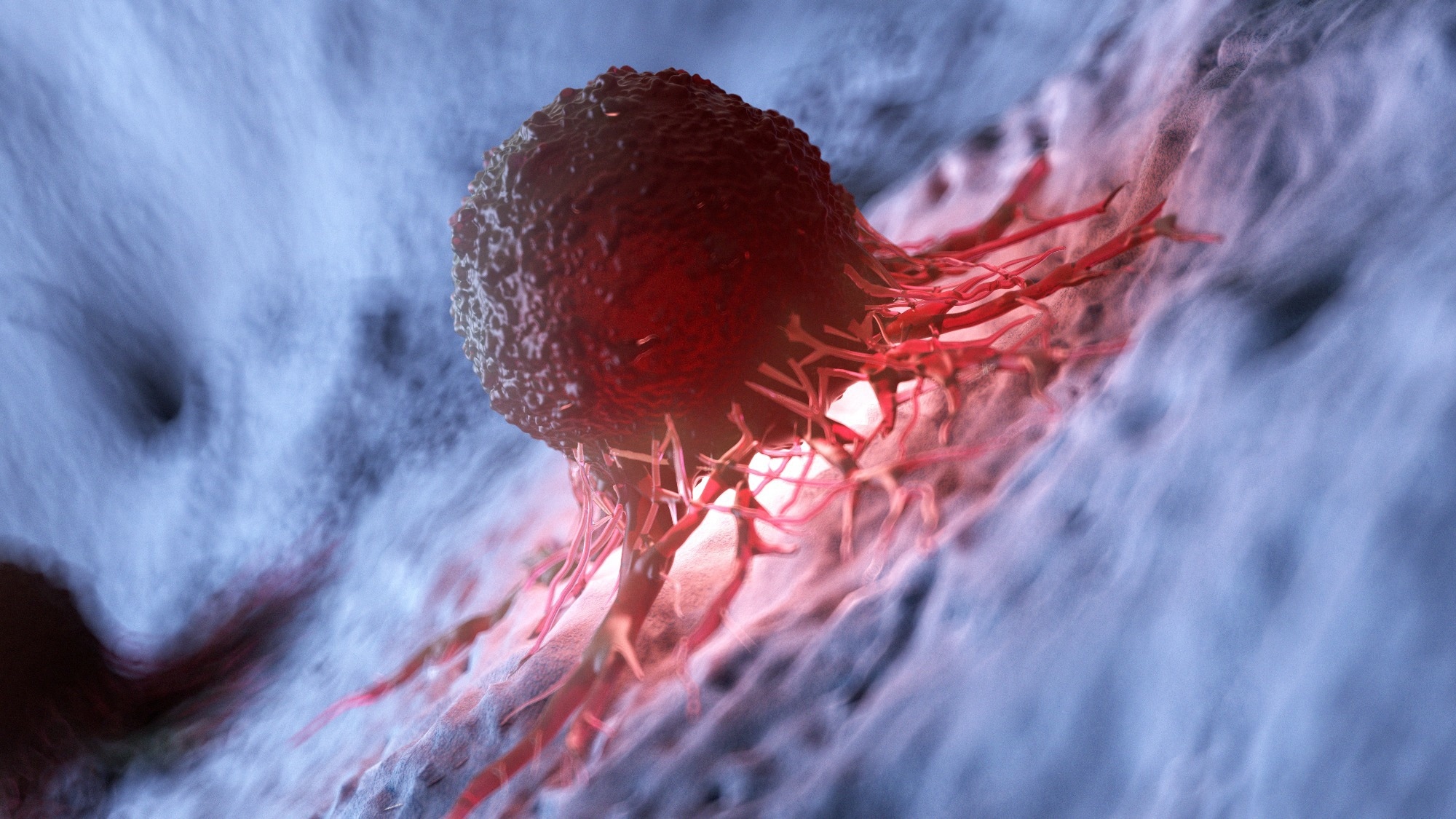In a recent study published in the journal Nature Communications, researchers use cellulose nanofiber (CNF) sheets to show extracellular vesicle (EV) geographical heterogeneity by spatial exosome analysis.
 Study: Spatial exosome analysis using cellulose nanofiber sheets reveals the location heterogeneity of extracellular vesicles. Image Credit: SciePro / Shutterstock.com
Study: Spatial exosome analysis using cellulose nanofiber sheets reveals the location heterogeneity of extracellular vesicles. Image Credit: SciePro / Shutterstock.com
What are EVs?
All live cells release EVs, which are crucial in intercellular communication. The biological properties of EVs may reflect their function, origin, and biogenesis, thus resulting in a wide range of EVs produced in physiological fluids.
Understanding EV subpopulations is critical; however, true heterogeneity is unattainable due to EVs continually moving in physiological fluids. For example, abdominal cavity tumors, such as those present in gastrointestinal and gynecological cancers, may lead to the accumulation of malignant ascites in these individuals. Within ascites, EVs can contribute to tumor progression, thus indicating their potential as a target for novel cancer treatments.
About the study
In the present study, researchers proposed using CNF paper to capture and preserve EVs from trace quantities of patient bodily fluids during surgery.
Due to their low density, high strength, multiple hydroxyl groups, large surface areas, robust water absorption, biocompatibility, sustainability, and biodegradability, CNFs are ideal for fabricating nanosheets with modifiable nanostructures. CNFs may be manufactured on a large scale for industrial activities. Cellulose nanofiber sheets were manufactured from CNF using never-dried pulp to create nano papers with modifiable nanostructures.
Ten liters of the body fluid sample were injected on CNF sheets to collect EVs from the body fluid supply. The dried sheets were rinsed in phosphate-buffered saline (PBS) for 10 seconds. After washing, the sheets were vortexed for 30 seconds in a 1.5-mL tube filled with PBS. After five minutes, CNF sheets were removed, leaving the EVs in the PBS solution.
Extracted EVs were examined using cryo-electron microscopy (cryo-EM), Western blot analysis, and quantitative reverse transcription-polymerase chain reaction (qRT-PCR) for micro-ribonucleic acid (miRNA) expression. ID8 ovarian cancer epithelial cells were used to assess tumor development from localized diseases.
The researchers proposed using the nano paper’s open pores and biocompatibility for direct EV capture from human bodily fluids and exploiting closed pores post-drying and consequent oxygen barrier features for EV storage. The porous cellulose nanopapers were customized to capture and store EVs from bodily fluids in human tissues.
Pore diameters were determined by EV size, whereas paper thickness was determined based on handleability and adherence to body tissues. Surface pollutants were detected using saliva samples and field-emission scanning electron microscopy (FE-SEM).
Prior to the use of the CNF sheet to extract EVs from wet organs, EV collection in patient sera was investigated. After washing away EV-free microRNAs, RNA was isolated. To test the efficacy of the washing operation for EV-free microRNA removal, synthetic microRNA was released onto the CNF sheet. The sheets were then left to dry and were preserved for one week.
After washing, microRNA extraction was performed using a lysis buffer, followed by qRT-PCR analysis and small-size RNA sequencing. The researchers studied the use of EV-free microRNA to capture ascites on tissues such as the uterus, ovary, omentum, liver, peritoneum, and other organs of the peritoneal cavity.
Study findings
CNF sheets enabled the study of bioactive compounds within EVs by providing a unique approach for collecting and storing EVs from biological fluids. Moreover, CNFs captured EVs in trace quantities of ascites by adhering CNF sheets to wet organs, which is adequate for small-size RNA sequencing.
CNF sheets could identify cancer-associated miRNAs in ovarian cancer from the initial stage when animals did not exhibit ascites. The changes in EV miRNA profiles were location-based, with profiles indicating illness circumstances.
Cluster of differentiation 63 (CD63)-positive EVs retrieved from sera using the CNF sheet exhibited spherical forms coated with lipid bilayer membranes while retaining EV size. Dry CNF sheets retained CD63-expressing extracellular vesicles at 1011 particles/mL for over 90 days, thus confirming the long-term storage of EVs on CNF sheets.
The pore size distributions of the CNF sheet following lysis buffer treatment showed that the lysis buffer might open the pores while also releasing miRNAs inside EVs.
Due to the repeatability of the miRNA profiles, two independent sequencing studies were performed on the same material. CNF sheet EV profiles on the fourth day considerably differed from those on the initial day, with profiles moving toward those of four-week ascites.
The CNF sheet attachment approach captured physiological EVs and allowed for the study of tumor growth in its early stages. Using CNF sheets revealed previously unknown cancer profiles in patients and may lead to a more complete knowledge of cancer biology.
Conclusions
The study findings reveal a CNF platform to harvest high-purity EVs from biofluids and retain them under dry conditions for seven days. This technology enabled the examination of EV location heterogeneity in human bodies, thereby contributing to novel medicinal applications and a better understanding of pathogenic causes.
The CNF sheet attachment approach verified CD63-positive EV subtypes and identified EVs on organ surfaces constituting previously unknown EV subpopulations. The liver surface and pelvic peritoneum showed distinct profiles.
Additional functional investigations may uncover previously undiscovered processes and offer new treatment targets.
Journal reference:
- Yokoi, A., Yoshida, K., Koga, H. et al. (2023). Spatial exosome analysis using cellulose nanofiber sheets reveals the location heterogeneity of extracellular vesicles. Nature Communications 14. doi:10.1038/s41467-023-42593-9